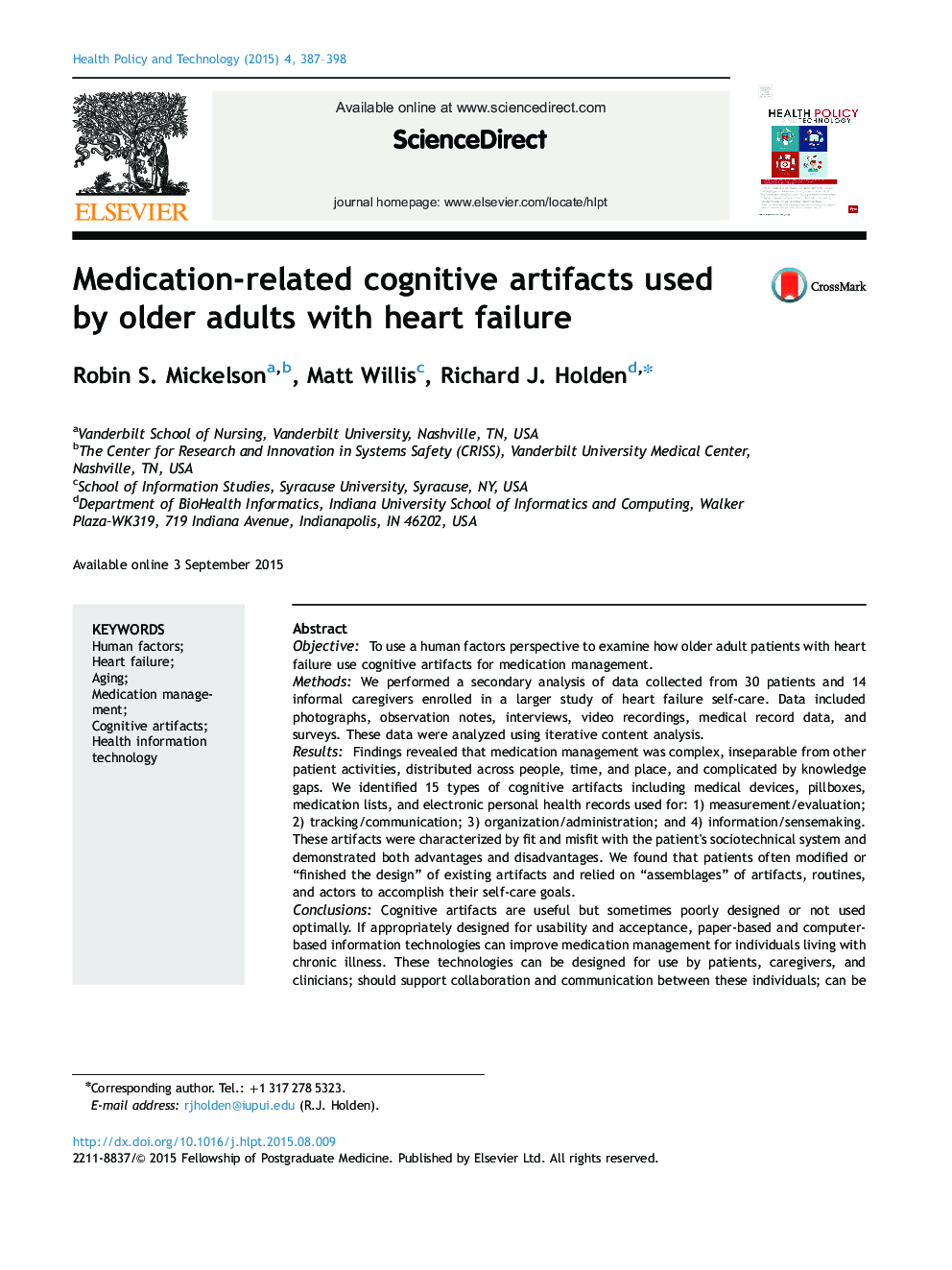| کد مقاله | کد نشریه | سال انتشار | مقاله انگلیسی | نسخه تمام متن |
|---|---|---|---|---|
| 3327329 | 1212171 | 2015 | 12 صفحه PDF | دانلود رایگان |
ObjectiveTo use a human factors perspective to examine how older adult patients with heart failure use cognitive artifacts for medication management.MethodsWe performed a secondary analysis of data collected from 30 patients and 14 informal caregivers enrolled in a larger study of heart failure self-care. Data included photographs, observation notes, interviews, video recordings, medical record data, and surveys. These data were analyzed using iterative content analysis.ResultsFindings revealed that medication management was complex, inseparable from other patient activities, distributed across people, time, and place, and complicated by knowledge gaps. We identified 15 types of cognitive artifacts including medical devices, pillboxes, medication lists, and electronic personal health records used for: 1) measurement/evaluation; 2) tracking/communication; 3) organization/administration; and 4) information/sensemaking. These artifacts were characterized by fit and misfit with the patient's sociotechnical system and demonstrated both advantages and disadvantages. We found that patients often modified or “finished the design” of existing artifacts and relied on “assemblages” of artifacts, routines, and actors to accomplish their self-care goals.ConclusionsCognitive artifacts are useful but sometimes poorly designed or not used optimally. If appropriately designed for usability and acceptance, paper-based and computer-based information technologies can improve medication management for individuals living with chronic illness. These technologies can be designed for use by patients, caregivers, and clinicians; should support collaboration and communication between these individuals; can be coupled with home-based and wearable sensor technology; and must fit their users’ needs, limitations, abilities, tasks, routines, and contexts of use.
Journal: Health Policy and Technology - Volume 4, Issue 4, December 2015, Pages 387–398
